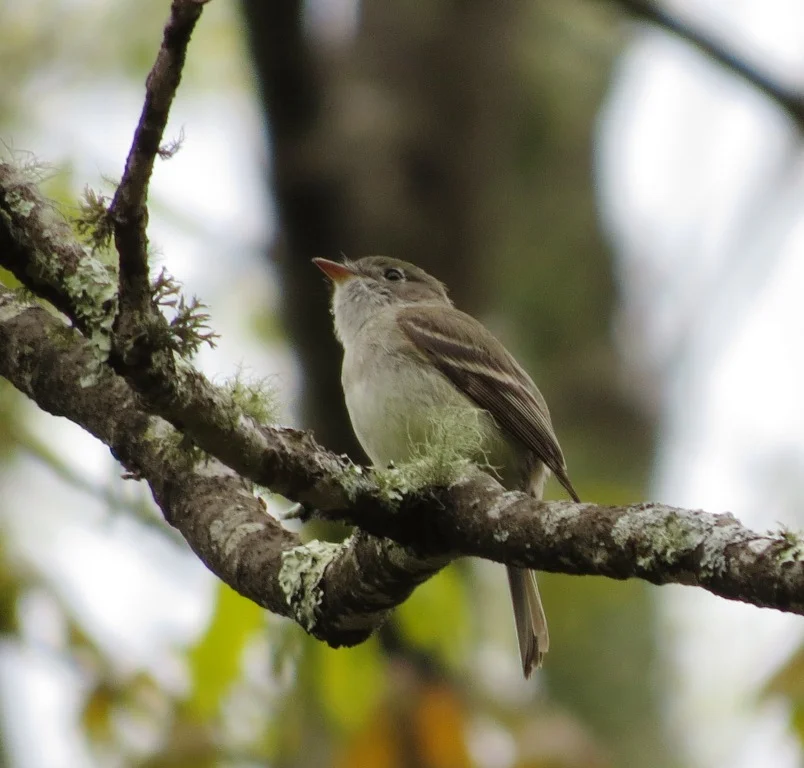The Blue Ridge Turning Green
Painted Trillium
The predominant color of middle May in the Blue Ridge mountains of SW VA is green.
There is an explosion in growth of plant life so an overall view of our farm shows a verdant landscape. Of course the re-awakening of the ecosystem after a winter's slumber first requires that plants provide the base of the food pyramid. In the fields this is predominantly grass, but in the woods spring wildflowers such as painted trillium are in bloom and trees are leafing out.
Herbivores take advantage of the new growth by breeding as these cecropia moths are doing. This largest of the North American moths is a generalist herbivore. Note that the antennae of the male and female are different- the male has larger ones to detect the pheromones released by the female, making it possible for him to locate her from miles away. The life cycle is strange in that the adults do not feed, but live only a short time to reproduce.
Cecropia moths mating
Catbird eggs
Birds are also breeding and it is interesting to try and locate their nests and follow their progress. I was fortunate to find this catbird nest in a viburnum bush and was impressed by its beautiful blue eggs. Some thrushes such as robins and bluebirds also have blue eggs with no apparent relation to the type of nesting site (open nest or in a cavity).
There were two "shorebirds" in our yard this week, the killdeer, which breeds here and feeds on land, and the solitary sandpiper which is migrating north to Canada and Alaska to breed. It is interesting that the killdeer, a type of plover which nests openly on the ground, has a very dark line which camouflages the eye, whereas the solitary sandpiper has a whitish ring around the eye which accentuates it. The solitary sandpiper nests in trees in old nests of other species and is obviously exposed to different types of predators. But don't such variations in the adaptations of animals test our knowledge and make nature study so more interesting?
Savannah Sparrow
The savannah sparrow is common in Florida in winter but relatively uncommon as a breeder here in VA. It thrives in grasslands throughout middle and northern North America and must have benefitted greatly by the clearing of the original forests by early settlers. Other field specialists present at this time are grasshopper sparrows, meadowlarks and bobolinks. We are experimenting with plantings and mowing schedules to improve our field habitats for these birds and especially to try and encourage bobolinks to remain and breed here.
The elevation of our farm is about 1800-2000 feet; nearby mountains extend up to 5700 feet and a different community of birds is present at the higher elevations. In a recent visit to nearby Grayson Highlands State Park we enjoyed listening to the songs and watching these birds such as rose breasted grosbeaks, least flycatchers and the highly prized cerulean and blackburnian warblers. We are hoping that this adult male cerulean and several other nearby males will remain and breed.
Spring is such a special time of year when everything seems new and fresh and life is just bursting out all over. Enjoy it while it lasts.
Bill Dunson
Galax, VA and Englewood, FL







